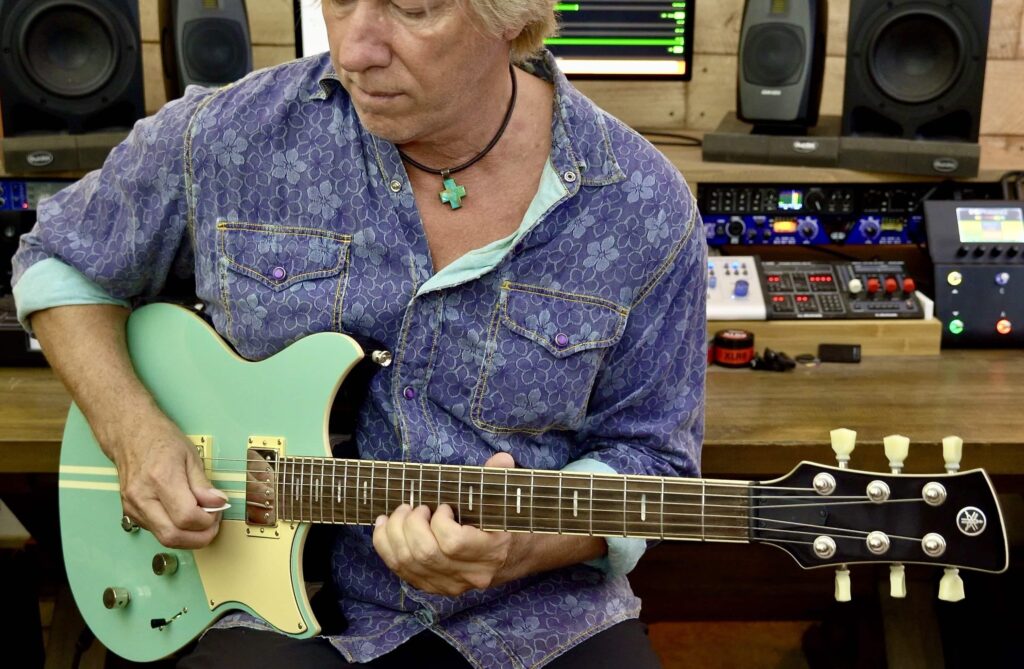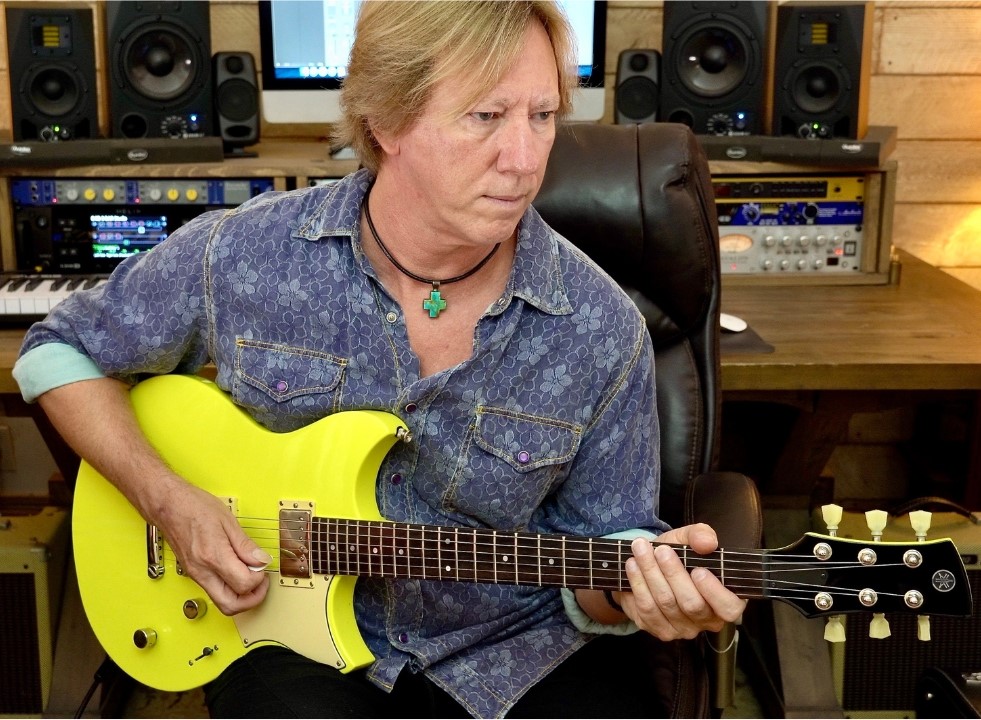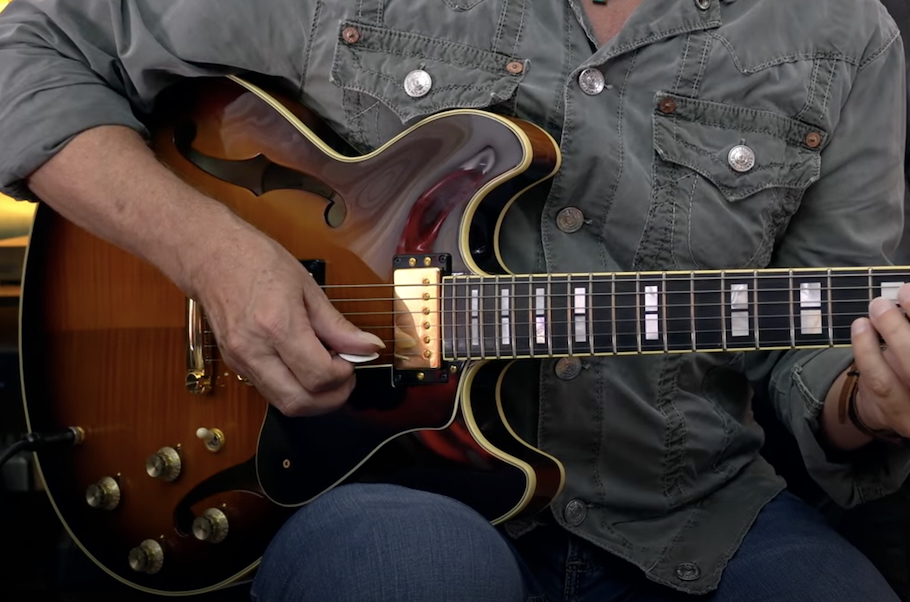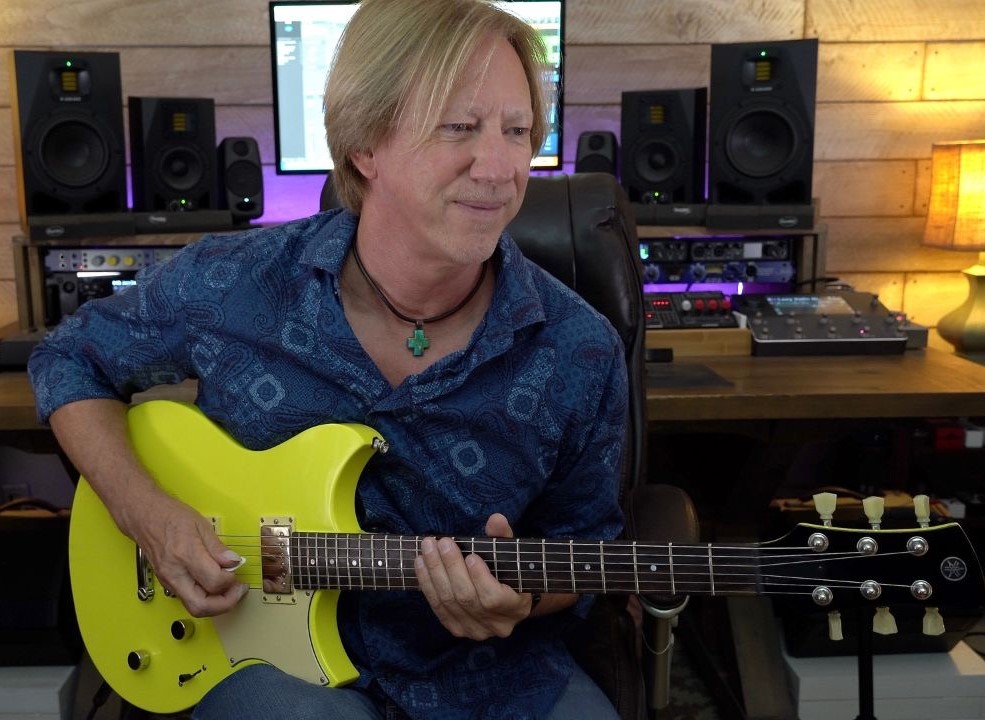How to Keep Falling in Love with Guitar
Reignite that passion!
My love affair with the guitar began in my early teens. I was initially drawn to the physical shapes and vibrant colors, but I think the sound of the instrument is what really got to me. The fact that a plank of wood with six strings stretched across it could evoke so many tones, musical styles and emotions was mind-blowing!
Yet it wasn’t until I picked the instrument up for the first time that I realized it could not make a harmonious sound until my hands coaxed it into doing so. Over many years, and with concerted effort, those sounds would eventually work together to form progressions, songs, and a wonderful career in music for this wide-eyed newbie.
I remember being absolutely intrigued by the symmetry of the chord shapes. I’d take a D major triad shape, then move the same triangular shape along the strings to create new sounds, new chords, new melodies … and new emotional content.

Sometimes I’d add or subtract a note from that basic shape and be amazed at how big a change that simple alteration made to the overall sound. My untrained hands and mind then went in search of new shapes and music along the length of those pain-inducing wires. I felt like an explorer, roaming the fretboard wilderness for an oasis of repertoire and harmonic vistas, and along the way, I discovered that some positions and shapes created pleasing “happy mistakes,” while others were downright cringe-worthy. I remembered the successes and learned to avoid the minefield of dissonant explosions.
The Challenge
I was brought up to work hard, honor my word and complete projects and tasks to the highest possible standard. So when I started to learn the guitar, I had the distinct feeling it would be a lifetime investment in time, money, and above all, myself. I didn’t think it would turn into a career, but life has a funny way of taking you on a journey … especially if you are listening intently and allowing opportunity to present itself to you.
Sometimes we also need to take the initiative and make the decision to improve by taking lessons, going to music school and working on our craft. None of this can be done for you, so you have to be proactive, make a commitment and prioritize your time.
Even when I was training to be a visual artist, I would keep coming back to the guitar. It soothed me, intrigued me and gave my fingers a constant challenge that could not be found by holding a brush, decorating a surface or completing an interior design. It’s that chance to improve that keeps me returning to the strings and constantly drives me forward to be a better musician.
Sometimes It’s Okay To Say No
I feel extremely blessed and fortunate to play the guitar for a living. But this also means that, sometimes, the last thing I want to do is see a guitar, play one, or even listen to music.
I’ve realized over the years that this is normal. So when a friend asks me to go and see their band — something I equate to asking a dentist to watch someone pull teeth after a day at work — I’ve learned that, at times, it’s okay to say “no thank you.” Taking time off from the instrument can be extremely helpful. No one wants to eat sushi and drink carrot juice every day. Take a break and renew your passion for the familiar flavors again.
New Discoveries
Nothing ignites my passion for the guitar more than discovering a new concept, approach or epiphany that I can share with my students. I often think of these ideas while lying in bed. I try to do all the theory in my head that very night; in the morning, I take a few hours to prove to my satisfaction that this new concept actually works on the instrument. This can often lift me from a playing “funk” (no pun intended) and inspire my next phase of enlightenment on the guitar.
Another great way to exit a rough patch in your playing progress is to simply take your guitar out of your typical playing environment or practice room and let new surroundings inspire you. Trust me, it works.
The Video
During the first half of this video, I’m using double-stop sixths and thirds to outline the chord changes of a popular (but very complex) blues progression. This demonstrates how shapes can make musical sounds that keep me inspired to learn even more simple symmetrical fingerings.
The second half of the video shifts to improvising with arpeggios (chord tones played as single-note melodies). I’m using these to outline each of the chord changes in order to solidify the harmonic structure underpinning the top-line melody. Think of arpeggios and chords as smaller shapes within the larger shape of a scale — something I like to call “shapes within shapes.”
The Guitars
The CSF-TA is the smallest (parlor-size) member of the Yamaha TransAcoustic lineup of guitars. This tiny powerhouse is perfect for fingerstyle blues like the tasty double-stops you see and hear in the video. It features a solid spruce top, mahogany back and sides, plus a wonderful array of onboard chorus, room and hall reverb effects, all without the need for external amplification.

The Yamaha Pacifica 612VIIFM takes the lead guitar role in this video. It features an alder body with a flame-maple veneer top (in this particular instrument, finished in translucent Indigo blue). The neck is a medium profile maple with a rosewood fingerboard. I’m using a blend of the Seymour Duncan neck and middle single-coil pickups to create the authentic blues tone you hear.

The Wrap-Up
We all fall in love with the guitar for different reasons: the way the wood resonates with our body, the feel of the instrument in our hands as we coax new sounds out of it, the roar of the strings when we play amplified. Many of us stay infatuated and committed to the relationship, while others may take some time away from the connection to explore other desires of the heart.
The flame burns bright at first and may flicker at times, but I truly believe it never burns out. Sometimes we just need to find new ways to fan those musical embers in order to spark a passionate new love affair with guitar.
Photographs courtesy of the author.
Check out Robbie’s other postings.
Click here for more information about the Yamaha CSF-TA TransAcoustic guitar.
Click here for more information about the Yamaha Pacifica 612VIIFM electric guitar.















